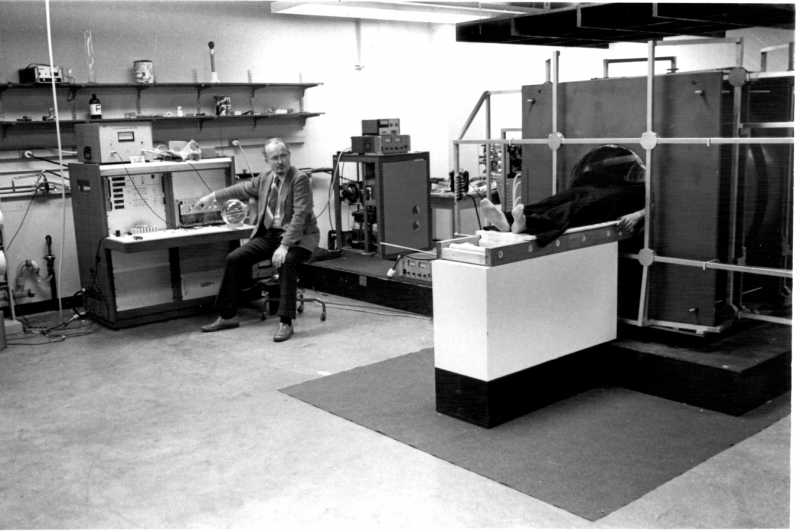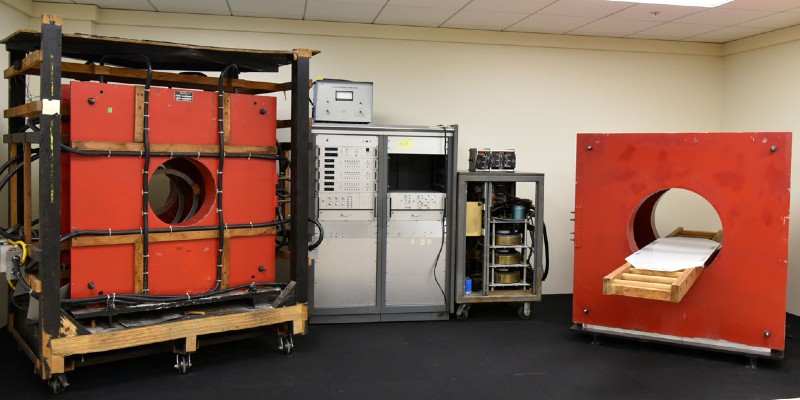Thursday, September 2nd is the 50th anniversary of magnetic resonance imaging (MRI). Paul Lauterbur, then a faculty member at Stony Brook University, came up with the idea in 1971. He came to U of I in the eighties to continue his work, and eventually won the Nobel Prize for Physiology for Medicine in 2003.
 Photo provided by Beckman Institute.
Photo provided by Beckman Institute.
The first two human MRI scanners, invented by Lauterbur, are now on display at Beckman Institute in the Illinois MRI Exhibit. The exhibit opened in 2020, and is a celebration of the invention, as well as the related research that happened here at U of I in the forties and fifties. The story is told on touchscreens through text, photos, infographics, and videos.
The scanners were found in 2017 in a storage shed in Urbana. From Brad Sutton, professor of bioengineering and technical director of Beckman’s Biomedical Imaging Center:
I received a call about a storage shed associated with Paul that I might be interested in looking through in case it had interesting artifacts. I didn’t know that we would find the data to Paul’s original experiments – thought lost to time – along with the first two human MRI systems. It is interesting to see his notes as he worked late nights for a month to go quickly from idea to images.
The Illinois MRI Exhibit can be found just off the atrium at Beckman Institute, and it is open to the public 7:30 a.m. to 6:30 p.m. Monday through Friday. Visitors are encouraged to share photos on social media and use #ILLINOISmri. There will also be a public lecture at 4 p.m. on September 2nd, given by Charles Springer of Oregon Health and Science University. It can be viewed here.
You can read more about MRI at Beckman here.
Top photo provided by Beckman Institute.








